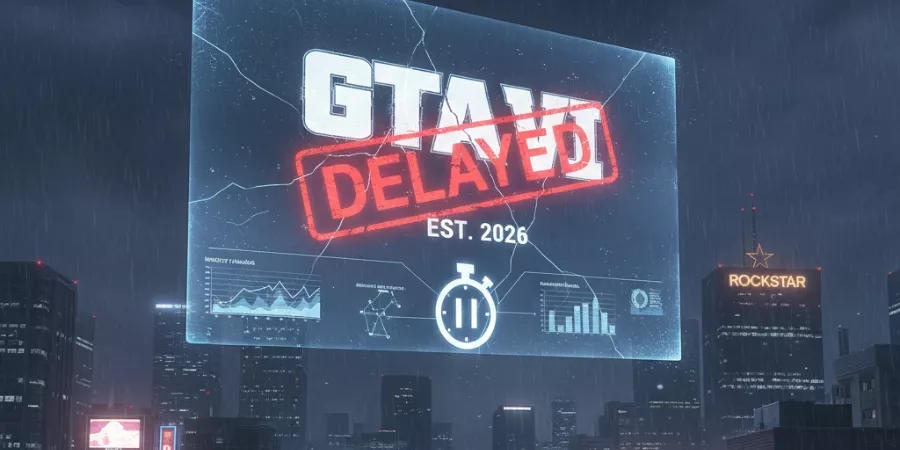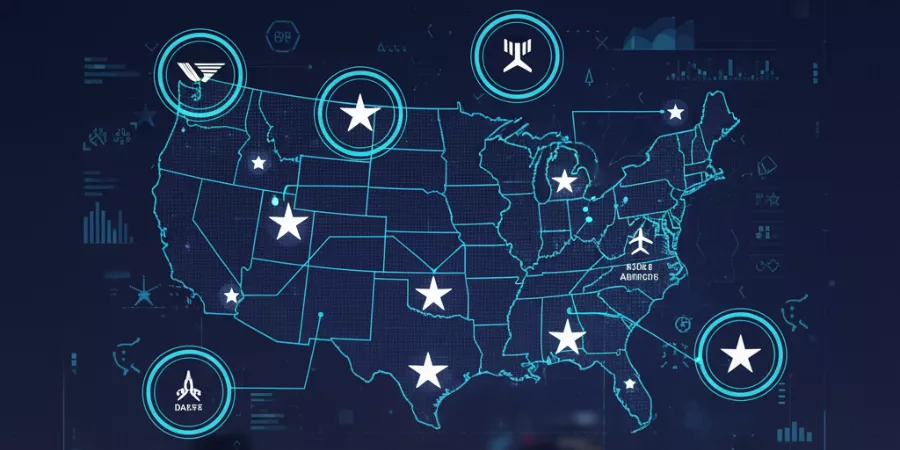When Rockstar Games announced on November 6 that Grand Theft Auto VI would miss its May 2026 target and instead launch November 19, 2026, the gaming world responded with a mixture of frustration and resignation. This marks the second delay for the industry’s most anticipated title originally slated for fall 2025, then pushed to May 2026, and now landing nearly a full year behind schedule. Yet for those who understand the economics and realities of modern AAA game development, the delay tells a far more complex story than simple mismanagement.
The Economic Reality Behind Eight Years of Development
GTA 6 represents the culmination of approximately eight years of active development, beginning in earnest in 2018 after Red Dead Redemption 2 shipped. Former Rockstar environment artist David O’Reilly confirmed this timeline in recent interviews, debunking widespread assumptions that development began immediately after GTA V’s 2013 release. This distinction matters enormously when analyzing the delay.
Modern AAA games no longer operate on the two-to-three-year development cycles that once defined the industry. According to Xbox leadership and industry analysts, flagship titles now require five to seven years minimum, with budgets routinely exceeding $200 million and teams numbering in the hundreds. Red Dead Redemption 2, Rockstar’s previous blockbuster, employed approximately 1,600 people and cost an estimated $370-540 million including marketing. GTA 6 is widely expected to surpass these figures significantly.
The delay reflects not weakness but the sheer ambition of what Rockstar is attempting to deliver. Take-Two CEO Strauss Zelnick framed it bluntly during the earnings call: “We’re seeking to release the most extraordinary title anyone’s ever seen in the history of entertainment.” That level of ambition demands time, resources, and an unwillingness to compromise on quality for the sake of meeting arbitrary deadlines.
Rockstar’s Established Pattern: Delay, Then Dominate
History provides crucial context. Every major Rockstar title over the past 15 years has experienced delays and every one became a critical and commercial phenomenon:
- Grand Theft Auto IV (2008): Delayed, went on to critical acclaim
- Red Dead Redemption (2010): Delayed, despite development challenges that included severe crunch and management issues
- Grand Theft Auto V (2013): Delayed from Spring to September 2013, became one of the best-selling games ever with over 220 million copies sold
- Red Dead Redemption 2 (2018): Delayed three times from 2017 to October 2018, launched to universal acclaim despite an eight-year development cycle
The pattern is unmistakable: Rockstar delays games when they need more time to achieve their vision, and the market consistently rewards that patience. While fans express frustration, the company’s track record demonstrates that the delays directly correlate with the polished, immersive experiences that define Rockstar titles.
The Technical Challenges of Building Modern Open Worlds
Creating the scale and fidelity that define contemporary AAA games presents exponential technical challenges. GTA 6 is confirmed to feature two playable protagonists Lucia and Jason set in Leonida, a fictional reimagining of Florida centered around a modernized Vice City. The game promises the detailed environmental storytelling that made Red Dead Redemption 2 legendary, now applied to a sprawling urban landscape with dynamic weather, advanced AI systems, and what industry insiders describe as unprecedented levels of interactivity.
These aren’t cosmetic features they’re fundamental systems that require years of iteration, optimization, and polish. Performance optimization alone across PlayStation 5, Xbox Series X|S, and eventually PC demands enormous resources. The second trailer, which Rockstar emphasized was captured directly from PlayStation 5 gameplay, showcased graphical fidelity that raised questions about how such quality could run smoothly across diverse hardware configurations. That optimization work is precisely what the additional months will address.
Online multiplayer adds another layer of complexity. GTA Online remains a billion-dollar revenue generator for Take-Two, and GTA 6 will certainly feature an ambitious online component. Building server infrastructure, balancing gameplay systems, and ensuring stability for potentially millions of concurrent players requires extensive testing that cannot be rushed.
The Human Cost: Avoiding Crunch While Maintaining Quality
Rockstar’s delays must also be understood through the lens of industry labor practices. Red Dead Redemption 2’s development was marred by reports of mandatory 100-hour work weeks, unpaid overtime, and brutal crunch periods that led to public criticism and the “Rockstar Spouse” controversy. The company has since acknowledged these issues and committed to better work-life balance.
Delaying a game rather than forcing teams into extended crunch represents a significant cultural shift in an industry notorious for exploitation. While Take-Two executives cite “polish” as the delay reason, insiders suggest the company is also attempting to avoid the burnout and turnover that plagued previous projects. This is particularly relevant given recent controversies, including the firing of 30-40 UK employees in October 2025 amid union-organizing efforts a move that reportedly left morale “at rock bottom” according to Rockstar North employees.
The delay allows Rockstar to finish the game properly rather than subjecting developers to months of unsustainable working conditions. In an industry increasingly scrutinized for labor practices, this represents evolution rather than failure.
Market Dynamics and Strategic Timing
From a business perspective, the November 19, 2026 date is strategically calculated. The holiday window is crucial for maximizing sales, and launching before year-end ensures GTA 6 captures both holiday consumer spending and positions itself for Game of the Year considerations in 2027 award cycles.
The delay also provides breathing room in Take-Two’s broader portfolio. With Borderlands 4 having launched in September 2025 to “softer than expected” results according to CEO Zelnick, the company benefits from spacing its blockbusters. While the delay pushed GTA 6 into fiscal 2027, Take-Two has raised its revenue guidance to $6.4-6.5 billion, demonstrating confidence that the timing ultimately serves the company’s financial interests.
Market analysts note that GTA 6 will likely reshape entertainment release schedules throughout 2026. Publishers are already reconsidering launches around the November date, recognizing that competing directly against Rockstar’s juggernaut represents near-certain commercial suicide. This market-dominating potential justifies the additional development time from every stakeholder’s perspective except impatient fans.
The Broader Industry Context: AAA Development in Crisis
GTA 6’s delay doesn’t exist in isolation it reflects industry-wide trends that suggest the traditional AAA development model faces sustainability challenges. Amazon recently halted significant AAA development efforts citing “evolving dynamics” in the competitive landscape. Major studios have implemented massive layoffs despite record revenues. Development costs have spiraled while subscription services like Game Pass complicate revenue models.
The fundamental economics have shifted. Games that once cost $60 now retail for $70, yet that price increase hasn’t kept pace with ballooning production costs. Publishers increasingly depend on microtransactions, season passes, and live-service models to achieve profitability. GTA Online’s continued success generating billions across GTA V’s 12-year lifespan demonstrates why Rockstar can justify such extensive development: the return on investment, when executed properly, dwarfs traditional game economics.
Industry veterans like BioShock creator Ken Levine argue that AAA development faces an innovation crisis, with publishers over-relying on established franchises because financial stakes are too high for experimentation. Games like Baldur’s Gate 3, Elden Ring, and even smaller titles like Hades demonstrate that players value innovation and refinement over photorealistic graphics alone. Yet market forces push AAA publishers toward spectacle and scale, creating ever-lengthening development cycles as teams struggle to meet rising expectations.
What The Delay Actually Means
The additional six months between May and November 2026 isn’t about adding features it’s about iteration, optimization, bug fixing, and the thousand small refinements that transform a good game into an exceptional one. This phase of development, often called “polish,” can’t be rushed without consequences. The disastrous launches of Cyberpunk 2077, No Man’s Sky, and Fallout 76 demonstrated what happens when publishers prioritize deadlines over readiness.
Take-Two’s willingness to delay despite investor pressure and fan expectations reflects confidence in two key areas: first, that GTA 6’s quality will ultimately justify the wait, and second, that the financial impact of delay is preferable to the reputational damage of a flawed launch. In an era where social media can destroy even major franchises overnight, this calculation makes strategic sense.
The delay also signals that Rockstar has identified specific issues that require additional time whether technical performance problems, content that needs refinement, or online infrastructure that isn’t yet stable. While the company won’t detail these issues publicly, the decision to delay six months rather than three suggests substantial work remains.
Looking Forward: The November 2026 Window
As the industry settles into this new timeline, several factors suggest this represents the final delay. Rockstar’s pattern historically involves one to three delays before launch, and GTA 6 has now hit two. The November date provides optimal market positioning while keeping the game within the same fiscal year for Take-Two, minimizing shareholder disruption.
More importantly, Rockstar can ill afford another delay. The longer GTA 6 remains in development, the more expensive it becomes. Team retention becomes challenging as developers complete their work and seek new projects. Marketing campaigns, already in motion for a 2026 launch, would require complete overhauls. And perhaps most critically, fan patience while remarkably durable given Rockstar’s reputation has limits even for the most anticipated title in gaming history.
The gaming community’s response to this delay has been notably more measured than previous controversies, with many recognizing that waiting for a polished product beats experiencing another broken launch. The “before GTA 6” meme that swept social media has evolved from mockery into almost affectionate acceptance of the game’s legendary development timeline.
The Bottom Line
GTA 6’s delay to November 2026 isn’t a failure it’s an inevitable consequence of attempting to create what Rockstar describes as the most ambitious entertainment product ever developed. The eight-year development cycle, staggering budget, massive team size, and technical complexity all necessitate flexibility in scheduling. History strongly suggests the delay will prove worthwhile when the game finally launches.
For the broader industry, GTA 6 represents both aspiration and cautionary tale. Its success could validate the massive-budget, extended-timeline approach to AAA development. Its continued delays highlight the unsustainability of current development practices and the need for structural changes in how the industry approaches blockbuster projects.
One certainty remains: when GTA 6 finally arrives on November 19, 2026, it will dominate gaming discourse, break sales records, and likely justify every month of additional development time Rockstar demanded. The question isn’t whether the delay was necessary it clearly was. The question is whether the AAA industry can continue operating under these economic and temporal constraints, or if GTA 6 represents the peak of an unsustainable model that will force dramatic changes in the years ahead.













